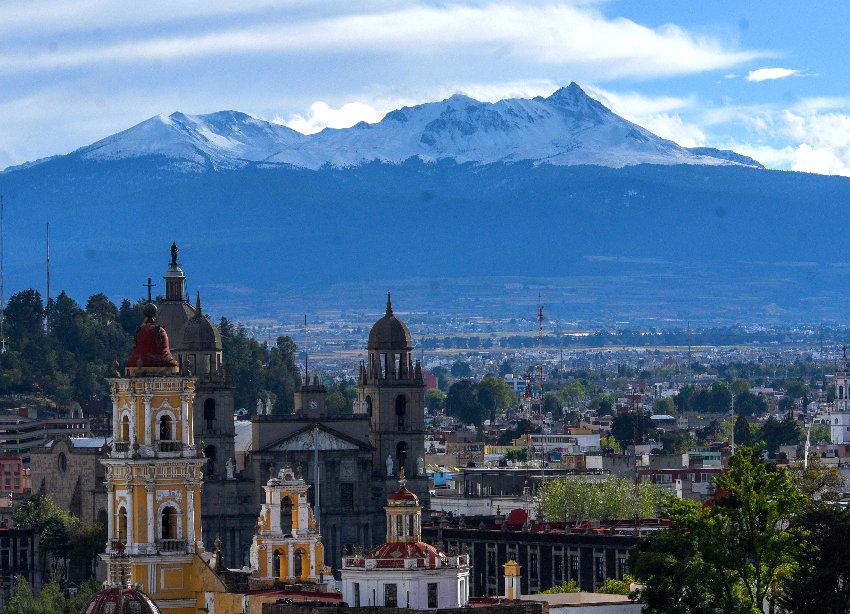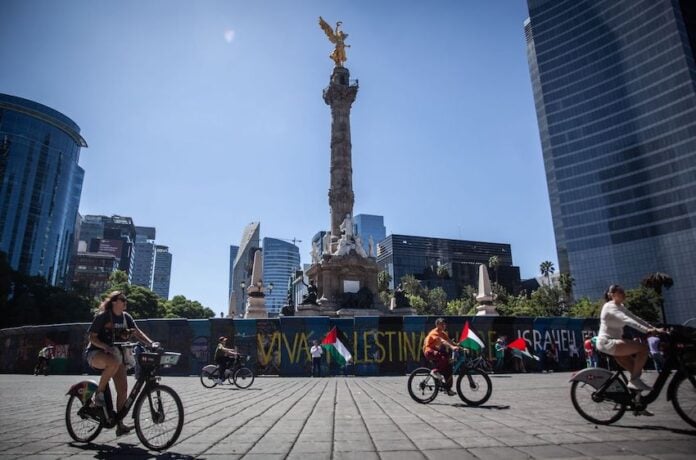In honor of World Statistics Day on Oct. 20, Mexico’s national statistics agency INEGI published a small book presenting the 99 facts you need to know about Mexico.
All week, we will be sharing the book’s contents translated into English.
Here is part 1!
1) In 2023, Mexico’s population reached 129,477,554 people, with women making up 51.7% of the total.
(Source: INEGI, National Survey on Demographic Dynamics – ENADID, 2023)
Mexico is the largest Spanish-speaking country and one of the ten most populous in the
world. These figures from INEGI reflect steady population growth and a slight
predominance of women, a global trend.
2) In 2020, 2.6 million people in Mexico identified as Afro-Mexican or of African descent, representing 2.0% of the national population.
(Source: INEGI, Population and Housing Census – CPV, 2020)
Mexico’s population of African descent is mainly concentrated in states like Guerrero,
Oaxaca and Veracruz, and continues to gain visibility socially and culturally.
3) What is the most common household appliance in Mexico? The blender. In 2024, 91.8% of households owned one.
(Source: INEGI, National Survey on Household Income and Expenditures – ENIGH, 2024)
The blender is an essential tool in Mexican kitchens, used for making salsas, drinks and
sauces. Its versatility and practicality have made it a staple in daily home cooking
throughout the country.
4) In 2020, there were one million people in Mexico aged 85 and older, and 18,295 of them were over 100 years old.
(Source: INEGI, Population and Housing Census – CPV, 2020)
Longer life expectancy and falling birth rates are resulting in a rapidly aging population in
Mexico. This shift brings new challenges for families, healthcare and social policies as
more people live to advanced ages.
5) By the end of 2023, women made up 51.4% of the workforce in Mexico’s federal public administration and 56.3% in state governments.
(Source: INEGI, National Census of Federal and State Governments – CNGF and CNGE, 2024)
Gender representation has become a central focus across Mexican government
institutions. Public policies and electoral reforms have opened opportunities for women to access leadership roles nationwide. These efforts are the result of long-standing
demands for equality and are shaping a more inclusive environment within the country’s
political and administrative spheres.

6) A household is defined as a group of people, related or not, who share the same dwelling and cover their living expenses together. In 2023, there were 38.9 million households in Mexico.
(Source: INEGI, National Survey on Demographic Dynamics – ENADID, 2023)
Households in Mexico include a variety of arrangements, from large multigenerational families to single-person homes.
7) Income can come in the form of money or goods and is derived from various sources such as work, government programs, and others. In 2024, the average combined monthly household income in Mexico was 25,955 pesos (US $1,400).
(Source: INEGI, National Survey on Household Income and Expenditures – ENIGH, 2024)
While many households rely primarily on wages, others depend on informal work or social aid. The data helps illustrate how income distribution shapes daily living conditions across Mexico.
8) In 2024, there were 111,805 establishments in Mexico dedicated to producing tortillas and other corn-based products.
(Source: INEGI, National Statistical Directory of Economic Units – DENUE, 2025)
Corn is at the core of Mexican identity and daily diet, with tortillas as an indispensable staple.
9) Toluca de Lerdo, at 2,674 meters above sea level, is the state capital with the highest elevation in Mexico.
(Source: INEGI, Digital Elevation Models – MDE, 2024)
This altitude gives Toluca a cool climate year-round and makes it unique among
Mexican capitals. Its geography also influences local traditions, agriculture and even high-performance sports, all adapted to life at nearly 2,700 meters.

10) In 2021, 70.1% of women in Mexico had experienced at least one incident of violence at some point in their lives.
(Source: INEGI, National Survey on the Dynamics of Household Relationships – ENDIREH, 2021)
Psychological, sexual and physical violence against women is widespread in Mexico.
11) In 2024, 7,093,631 establishments were operating in Mexico.
(Source: INEGI, Economic Censuses – CE, 2024)
These establishments span sectors from commerce to services and manufacturing. Most
are small businesses and microenterprises, which form the backbone of the national economy.
12) How many books do Mexicans read per year? In 2022, Mexicans read an average of four books; by 2024, the figure had dropped to three.
(Source: INEGI, Reading Module – MOLEC, 2022 and 2024)
The number of books read by Mexicans has declined in recent years, especially among young adults. Economic factors, access to books and changing habits all play a role. Promoting reading remains an ongoing challenge for schools and families in Mexico.
13) In 2020, 70% of Mexico’s surface water (rivers, lakes, lagoons, wetlands) was found in Chiapas, Tabasco, Campeche and Veracruz.
(Source: INEGI, Hydrology – HIDRO, 2024)
These southeastern states receive the most rainfall, making them rich in natural water resources. Much of the country, especially the north and center, faces water scarcity despite the abundance in the south.
14) The collection of solid urban waste is one of the essential services provided by local governments. In 2022, an average of 108,146 tonnes were collected daily across Mexico.
(Source: INEGI, National Census of Municipal Governments and Mexico City Territorial Demarcations – CNGMD, 2023)
Most waste is gathered through door-to-door pickup, reflecting the country’s substantial urban population. Efficient waste management is a growing challenge for municipalities.
15) In 2024, there were 61.3 million vehicles in circulation in Mexico — a 5.4% increase from 2023.
(Source: INEGI, Motor Vehicles Registered in Circulation – VMRC, 2023 and 2024)
Car ownership continues to grow, especially in urban and suburban areas. Managing pollution and congestion is a growing priority, especially in Mexico City, which has the worst traffic of any city in the world.
16) Between April and June of 2025, the population who had a job or were looking for one had an average of 10.7 years of schooling (roughly equivalent to completing the second year of high school).
(Source: INEGI, National Employment and Occupation Survey – ENOE, second quarter 2025)
This educational level falls just short of finishing upper secondary education, which is a
challenge for workforce readiness in Mexico. Investing in education is key to narrowing
gaps between skills and employment opportunities. The figure also highlights how
school dropout rates continue to impact job prospects.
17) In 2023, 95 out of every 100 people living in Chiapas were born there, while in Quintana Roo, only 50 out of every 100 residents were natives of that state.
(Source: INEGI, National Survey on Demographic Dynamics – ENADID, 2023)
Chiapas has a highly rooted local population, unlike Quintana Roo, a prime destination for internal migration.
18) Between March and April 2025, 75.6% of Mexico’s population felt that living in their state was unsafe due to crime. By contrast, only 40.5% felt their own neighborhoods were unsafe.
(Source: INEGI, National Survey of Victimization and Perception of Public Safety – ENVIPE, 2025)
Insecurity is consistently perceived as the biggest concern among Mexicans. Personal experience varies widely depending on location and local conditions. These attitudes influence daily life, public policy and trust in institutions.
19) In 2022, 23.7% of Mexico’s population reported having experienced discrimination in the previous 12 months.
(Source: INEGI, National Survey on Discrimination – ENADIS, 2022)
The number of people facing discrimination has been on the rise. Marginalized groups, such as women, members of the LGBTQ+ community and migrants, report above-average experiences of exclusion in Mexico.
20) In 2024, the average monthly income for women in Mexico was 7,905 pesos (US $429), while for men it was 12,016 pesos (US $652) — a gender gap of 4,111 pesos (US $222.50).
(Source: INEGI, National Survey on Household Income and Expenditures – ENIGH, 2024)
Women earned about 34% less than men on average, highlighting persistent gender inequality in Mexico’s labor market. Pay differences can be influenced by occupation, education level and family responsibilities. Bridging the gap is a longstanding goal for policy and social programs.
Mexico News Daily
